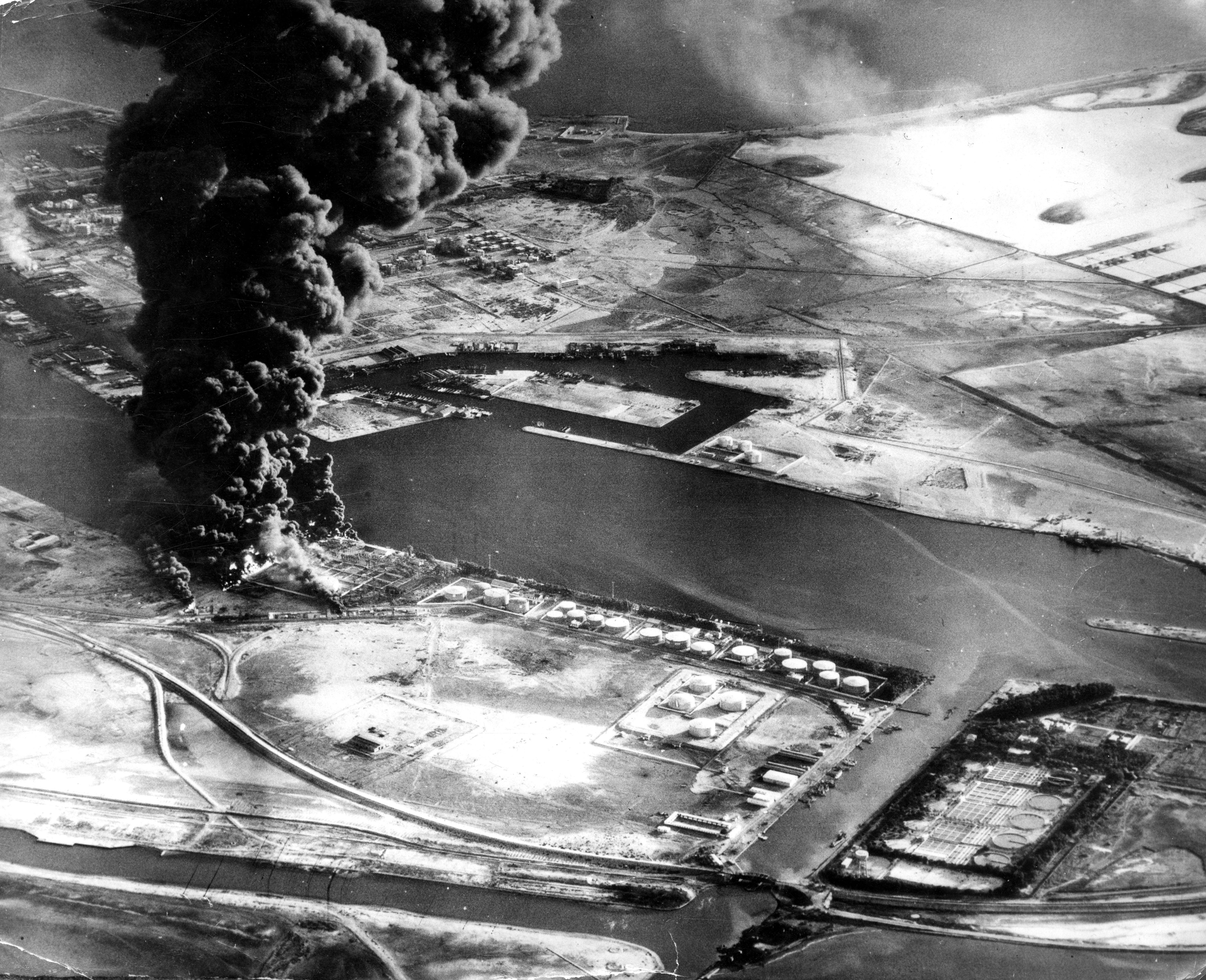Before the Ever Given: A look at the crises that closed Suez
Since it opened in 1869, Egypt’s Suez Canal has been a source of national pride and a focus of international conflict

Your support helps us to tell the story
From reproductive rights to climate change to Big Tech, The Independent is on the ground when the story is developing. Whether it's investigating the financials of Elon Musk's pro-Trump PAC or producing our latest documentary, 'The A Word', which shines a light on the American women fighting for reproductive rights, we know how important it is to parse out the facts from the messaging.
At such a critical moment in US history, we need reporters on the ground. Your donation allows us to keep sending journalists to speak to both sides of the story.
The Independent is trusted by Americans across the entire political spectrum. And unlike many other quality news outlets, we choose not to lock Americans out of our reporting and analysis with paywalls. We believe quality journalism should be available to everyone, paid for by those who can afford it.
Your support makes all the difference.Since it opened in 1869, Egypt’s Suez Canal has been a source of national pride and a focus of international conflict. It is one of the world’s great maritime shortcuts, connecting the Red and Mediterranean Seas through a narrow passage that chops thousands of miles off most east-west shipping voyages.
Now, a different sort of crisis has thrust the Suez Canal into the global spotlight. A skyscraper-sized container ship called the Ever Given got stuck sideways across the waterway last week. The obstruction has halted canal traffic — valued at over $9 billion a day — disrupting a global shipping network already burdened by the coronavirus pandemic. Hundreds of ships waiting to cross the canal have piled up in a colossal traffic jam. With the vessel's bow still firmly lodged in the eastern bank, other shippers are opting to take the long route around the Cape of Good Hope.
Nearly 19,000 vessels passed through the Suez Canal last year, carrying over 10% of global trade, including 7% of the world’s oil. While its shutdown this week is historic, the canal is no stranger to disruption. Here’s a look at some major incidents that have closed or threatened the bottleneck in the past.
THE “SUEZ CRISIS”
In 1956, Egypt’s then-President Gamal Abdel Nasser nationalized the canal. The seizure, celebrated by Egyptians as a defiant break from European imperialism, prompted Britain, France and Israel to intervene militarily and occupy the canal zone.
As fighting raged, sunken ships sealed off the canal for months. The United States and the Soviet Union, which openly opposed the invasion, ultimately forced the three countries to withdraw. Egypt was able to reopen the canal in March 1957, in what was seen across the region as a victory for pan-Arab nationalism.
THE 1967 MIDEAST WAR
A decade later, at the outbreak of the 1967 Mideast war, Egypt closed the canal to international shipping as Israeli forces struck again at the canal zone and entrenched in the Sinai Peninsula. This time, the canal was shut for eight years. Accumulating mines, bombshells and sunken vessels, the waterway became a fortified trench in the war. It was only after peace talks with Israel that Nasser's successor, Egyptian President Anwar Sadat reopened the waterway in 1975.
During the closure, over a dozen cargo ships were stranded midway through the canal in the Great Bitter Lake. The closed canal cost the world $1.7 billion in lost trade and increased shipping costs and Egypt $250 million in lost toll revenues annually, according to a U.N. study.
The shutdown forced Europe-bound vessels to avoid Suez by rounding the southern tip of Africa, encouraging shippers to find economies of scale by developing increasingly large supertankers — a trend that, ironically, led ships to swell to the size of the stranded Ever Given.
A TARGET FOR MILITANT ATTACKS
The canal divides mainland Egypt from the restive Sinai Peninsula, where the Egyptian military has been fighting a yearslong insurgency led by a local affiliate of the Islamic State group. The violence has threatened to spill over and disrupt global trade. In the summer of 2013, a Sinai-based militant group called the Furqan Brigades attacked two vessels in the waterway with rocket-propelled grenades, causing slight damage. Despite repeated vows to target the waterway, Egyptian militants so far have failed to impact maritime traffic there.
OTHER SHIPS HAVE RUN AGROUND
Groundings of vessels previously have closed the narrow waterway, which can be difficult to navigate when there’s poor visibility. The first reported accident occurred in 1937, when high winds and rain squalls caused the U.K.-owned passenger liner Viceroy of India to ram into the bank and halt marine traffic for a day. Over the century, several other freighters have crashed or briefly shut down the waterway for up to three days, including a Greek-owned oil tanker in 1954, a Russian tanker in 2004 and a container ship that broke down in 2018 and triggered a multi-ship collision.
In all cases, however, the groundings were swiftly resolved. Never before has a ship become wedged athwart the width of the canal, like the Ever Given.
THE EVER GIVEN
The giant 400-meter-long (quarter-mile-long) Ever Given, a Panama-flagged, Japanese-owned ship that hauls cargo between Asia and Europe, got stuck last Tuesday in a single-lane stretch of the canal. The ship's operators insist it crashed into the bank because of strong winds and a sandstorm, but the circumstances of the grounding remain unclear. Egyptian authorities suggested Saturday that human error may have been a factor.
A squadron of tugs and diggers continued their struggle to free the Ever Given on Sunday. But without any significant progress, authorities may be forced to offload the vessel's containers — an operation that could take days.